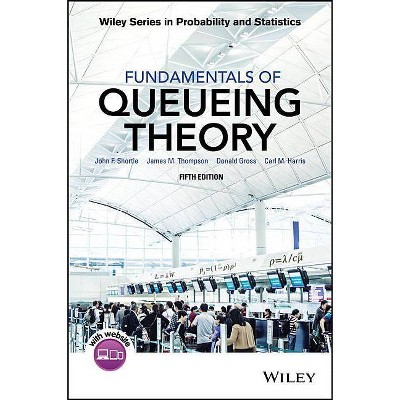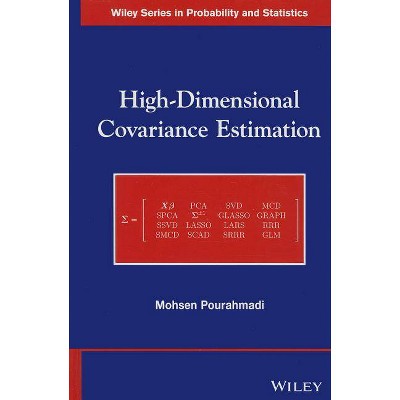Using the Weibull Distribution - (Wiley Probability and Statistics) by John I McCool (Hardcover)

Similar Products
Products of same category from the store
AllProduct info
<p/><br></br><p><b> Book Synopsis </b></p></br></br><p><b>Understand and utilize the latest developments</b> <b>in Weibull inferential methods</b></p> <p>While the Weibull distribution is widely used in science and engineering, most engineers do not have the necessary statistical training to implement the methodology effectively. <i>Using the Weibull Distribution: Reliability, Modeling, </i> <i>and Inference</i> fills a gap in the current literature on the topic, introducing a self-contained presentation of the probabilistic basis for the methodology while providing powerful techniques for extracting information from data.</p> <p>The author explains the use of the Weibull distribution and its statistical and probabilistic basis, providing a wealth of material that is not available in the current literature. The book begins by outlining the fundamental probability and statistical concepts that serve as a foundation for subsequent topics of coverage, including: </p> <p>- Optimum burn-in, age and block replacement, warranties</p> <p>and renewal theory</p> <p>- Exact inference in Weibull regression</p> <p>- Goodness of fit testing and distinguishing the Weibull</p> <p>from the lognormal</p> <p>- Inference for the Three Parameter Weibull </p> <p>Throughout the book, a wealth of real-world examples showcases the discussed topics and each chapter concludes with a set of exercises, allowing readers to test their understanding of the presented material. In addition, a related website features the author's own software for implementing the discussed analyses along with a set of modules written in Mathcad(R), and additional graphical interface software for performing simulations.</p> <p>With its numerous hands-on examples, exercises, and software applications, <i>Using the Weibull Distribution</i> is an excellent book for courses on quality control and reliability engineering at the upper-undergraduate and graduate levels. The book also serves as a valuable reference for engineers, scientists, and business analysts who gather and interpret data that follows the Weibull distribution</p><p/><br></br><p><b> From the Back Cover </b></p></br></br><p><b>Understand and utilize the latest developments in Weibull inferential methods</b></p> <p>While the Weibull distribution is widely used in science and engineering, most engineers do not have the necessary statistical training to implement the methodology effectively. <i>Using the Weibull Distribution: Reliability, Modeling, and Inference</i> fills a gap in the current literature on the topic, introducing a self-contained presentation of the probabilistic basis for the methodology while providing powerful techniques for extracting information from data.</p> <p>The author explains the use of the Weibull distribution and its statistical and probabilistic basis, providing a wealth of material that is not available in the current literature. The book begins by outlining the fundamental probability and statistical concepts that serve as a foundation for subsequent topics of coverage, including: </p> <ul> <li>Optimum burn-in, age and block replacement, warranties and renewal theory</li> <li>Exact inference in Weibull regression</li> <li>Goodness of fit testing and distinguishing the Weibull from the lognormal</li> <li>Inference for the Three Parameter Weibull</li> </ul> <p>Throughout the book, a wealth of real-world examples showcases the discussed topics and each chapter concludes with a set of exercises, allowing readers to test their understanding of the presented material. In addition, a related website features the author's own software for implementing the discussed analyses along with a set of modules written in Mathcad(R), and additional graphical interface software for performing simulations.</p> <p>With its numerous hands-on examples, exercises, and software applications, <i>Using the Weibull Distribution</i> is an excellent book for courses on quality control and reliability engineering at the upper-undergraduate and graduate levels. The book also serves as a valuable reference for engineers, scientists, and business analysts who gather and interpret data that follows the Weibull distribution.</p><p/><br></br><p><b> About the Author </b></p></br></br><p><b>JOHN I. McCOOL, PhD, </b> is Professor of Systems Engineering at Penn State Great Valley School of Graduate Professional Studies. A Fellow of the American Society for Quality, Dr. McCool previously served as principal engineering scientist at SKF Industries Inc., where he conducted corporate as well as federally sponsored research projects with the Wright-Patterson Air Force Base, the Office of Naval Research, the Naval Air Propulsion Center, the Department of Energy, and the Air Force Office of Scientific Research.</p>
Price History
Price Archive shows prices from various stores, lets you see history and find the cheapest. There is no actual sale on the website. For all support, inquiry and suggestion messages communication@pricearchive.us




















